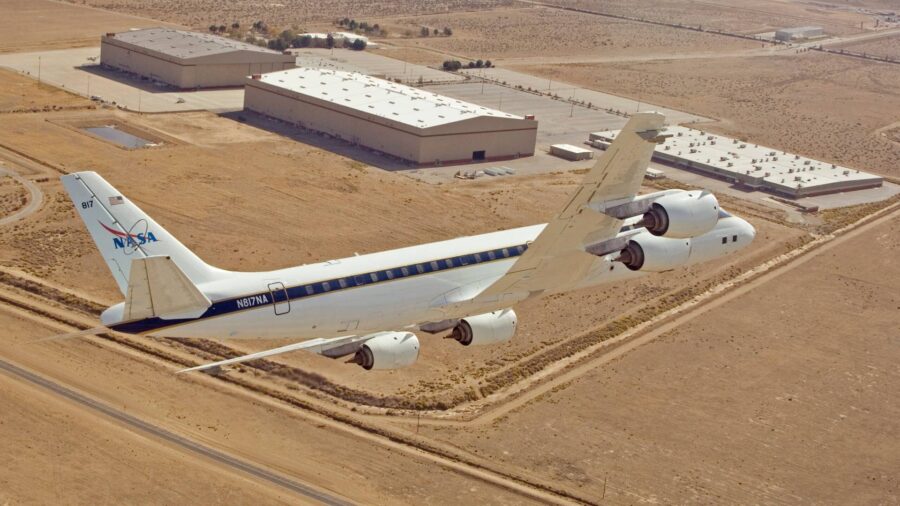NASA Retires Historic DC-8 Flying Laboratory as Era of Early Airliners Nears End in U.S.

NASA’s Douglas DC-8 flying laboratory, one of the last of its kind still flying in the United States, has officially retired. The aircraft, designated N817NA and known as the Airborne Science Laboratory, concluded its service with a final flight from NASA’s Armstrong Flight Research Center in Palmdale, California. This flight included a ceremonial flyover of Ames Research Center before the aircraft made its way to its new home at Idaho State University.
Taking off from NASA’s Armstrong Flight Research Center in Edwards, California, the DC-8 is headed to its final destination in Pocatello, Idaho. It will be permanently housed at Idaho State University, where it will serve an educational purpose, helping to train future aircraft technicians.
This farewell flight not only symbolizes the conclusion of the aircraft’s many contributions to scientific research but also highlights its new role in advancing aerospace education. As the DC-8 transitions from a cutting-edge research tool to a vital educational resource, its legacy will continue to influence generations to come.
The DC-8 has been a cornerstone of NASA’s airborne research since it was acquired in 1985. Originally built in 1969 and having served airlines like Alitalia and Braniff, this aircraft was extensively modified for scientific missions. It was re-engined with CFM56 high-bypass turbofans which enhanced its efficiency for long-endurance missions critical to NASA’s research.
Over the years, the DC-8 supported a multitude of research initiatives across federal, state, academic, and international domains. Its missions varied from sensor development and satellite sensor verification to environmental and Earth sciences studies. This included major campaigns like the Airborne and Satellite Investigation of Asian Air Quality (ASIA-AQ) program. The aircraft’s unique modifications allowed it to carry up to 45 researchers and 30,000 pounds of scientific equipment, making it an invaluable asset for data collection on a global scale.
The plane’s significant contributions also extended to space missions. It was equipped with advanced tracking and telemetry systems to support space vehicle launches and re-entries for both NASA and international space agencies like the European Space Agency and the Japan Aerospace Exploration Agency.
Despite its advanced age, the DC-8 was consistently updated with state-of-the-art technology, including dual satellite communications for the science team and flight crew. Its last major update came after a year of heavy maintenance in 2020-21. However, in 2023, NASA decided to replace the DC-8 with a more modern Boeing 777-200ER, which is currently being modified for research duties and is expected to start operations in FY 2026.
The DC-8’s retirement marks a significant moment in aviation history, as it transitions to its final role at Idaho State University, where it will serve as a practical training tool for future aircraft technicians. This move ensures that, while it may no longer fly, N817NA will continue to contribute to aerospace and science education.
With the retirement of NASA’s DC-8, the remaining active DC-8 in the U.S. is operated by Samaritan’s Purse. This aircraft is also nearing the end of its operational life, signaling the imminent close of the DC-8 era in the United States—a period marked by significant contributions to both commercial aviation and scientific research. The Douglas DC-8, though overshadowed by the Boeing 707, remains a revered aircraft for its robust service life and adaptability, traits that have allowed it to outlast many of its contemporaries.
Sources: AirGuide Business airguide.info, bing.com, twz.com, nbcbayarea.com
